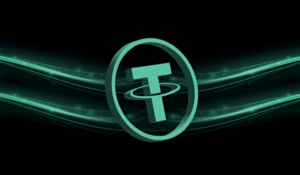ECB Adopts Blockchain Technology to Revolutionize Payment Systems

European Central Bank Embraces blockchain with New Initiatives
ECB’s Strategic blockchain Projects
The European Central Bank (ECB) is embarking on a significant technological transformation. Recently, the Governing Council has greenlit two ambitious projects aimed at incorporating blockchain technology into the euro transaction settlement framework. This marks a pivotal step in modernizing the financial systems of the European Union.
Overview of the Initiatives
On July 1, 2025, the ECB revealed its approval of two key initiatives designed to integrate distributed ledger technology (DLT) into payment settlements. These projects aim to bridge existing Eurosystem infrastructures with innovations from Web3, all while ensuring central oversight of the currency.
The first initiative, dubbed “Pontes,” is set to enter its pilot phase by the third quarter of 2026. This project will link DLT platforms—often utilized in decentralized finance and asset tokenization—with TARGET services, which currently facilitate interbank and securities settlements across Europe. The objective is to prevent these platforms from evolving in isolation and to weave them into the broader European financial ecosystem.
In the longer term, the “Appia” project will investigate methods to align this technology with international cross-border transactions, potentially allowing for integration with other currencies and financial systems. This cautious yet strategic approach aims to avoid repeating historical missteps in digital technology.
These announcements follow a testing phase conducted from May to November 2024, which highlighted the advantages of DLT, including cost savings, reduced settlement risks, and enhanced efficiency in fund transfers.
A Response to Global Monetary Dynamics
While the ECB’s initiatives may appear primarily technical, they are also a response to a larger global monetary landscape. As the United States accelerates its stablecoin regulations—with backing from Congress and the Federal Reserve—the Bank of France has issued several warnings regarding the risks posed by American companies like Circle (USDC) and Tether (USDT), which collectively account for over $215 billion in the market.
In this context, the ECB’s decision to develop a public DLT-compatible infrastructure can be interpreted as a strategic countermeasure. Instead of outright banning or restricting stablecoins, Europe aims to provide a technological and regulatory alternative through the digital euro and the controlled integration of blockchain into its settlement processes.
This strategy would enable Europe to preserve its monetary independence while equipping itself with competitive tools against the rapid advancements in programmable finance emerging from the U.S. Notably, studies indicate that approximately 66% of card payments in the eurozone currently rely on non-European infrastructures.
Conclusion: A Strategic Shift for Europe
As global finance undergoes rapid changes, the ECB is finally embracing blockchain technology. The “Pontes” and “Appia” projects represent more than just technical endeavors; they reflect a strategic vision to ensure that Europe does not become a passive observer in the evolving crypto landscape. The pressing question remains whether this ambition will resonate with the markets before stablecoins dominate the financial scene.
Disclaimer: The opinions expressed in this article are solely those of the author and should not be considered as investment advice. Readers are encouraged to conduct their own research before making any investment decisions.







